Redfish remain a perennially popular species among inshore fishermen. Whether you’re targeting local hot spots or traveling to one of the more popular destinations for redfishing, local tactics often work best when trying to catch redfish. We reached out to several pro anglers and asked about their favorite redfish rigs, what tactics they use for finding fish, and other tips for catching more redfish.
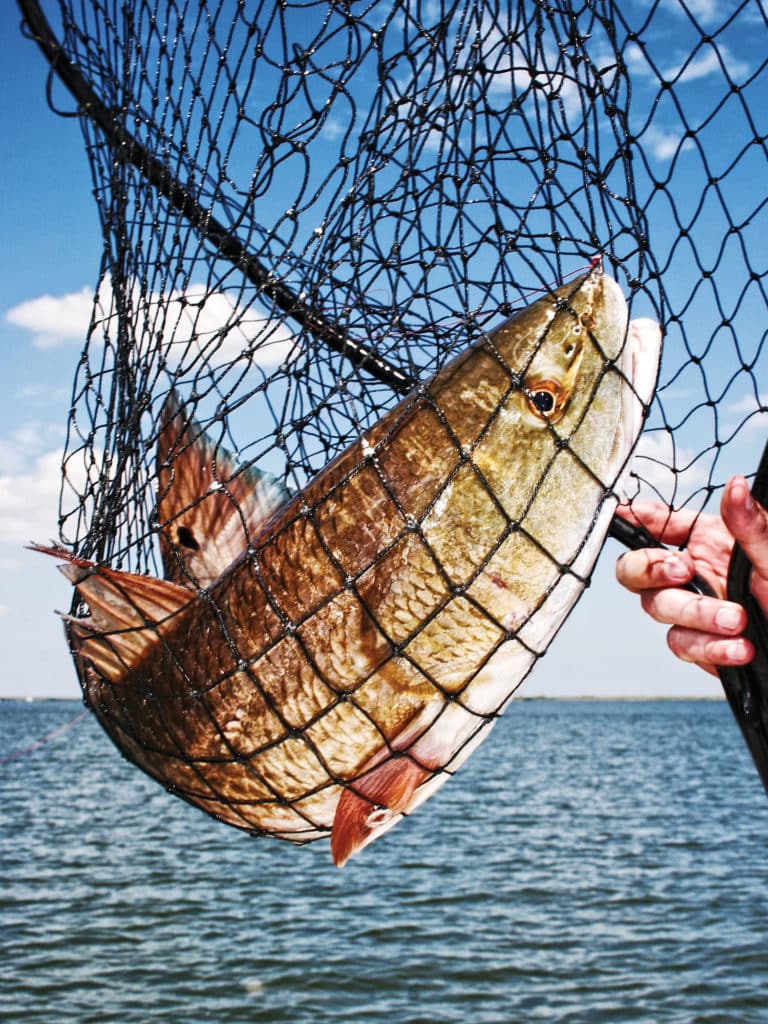
Best Redfish Rig for Crab Baits
One of the best redfish tackle setups is the no-brainer rig. Capt. John Eggers, a veteran charter captain and tournament angler in Jacksonville Beach, Florida, is a big believer in the “no-brainer” rig — a simple but ingenious design consisting of a ¼- to 3⁄8-ounce egg sinker tightly snugged on the shank of a 5/0 circle hook (with an up-turned eye). It practically guarantees a solid hookset when fishing natural bait, without the usual snapping of the rod.
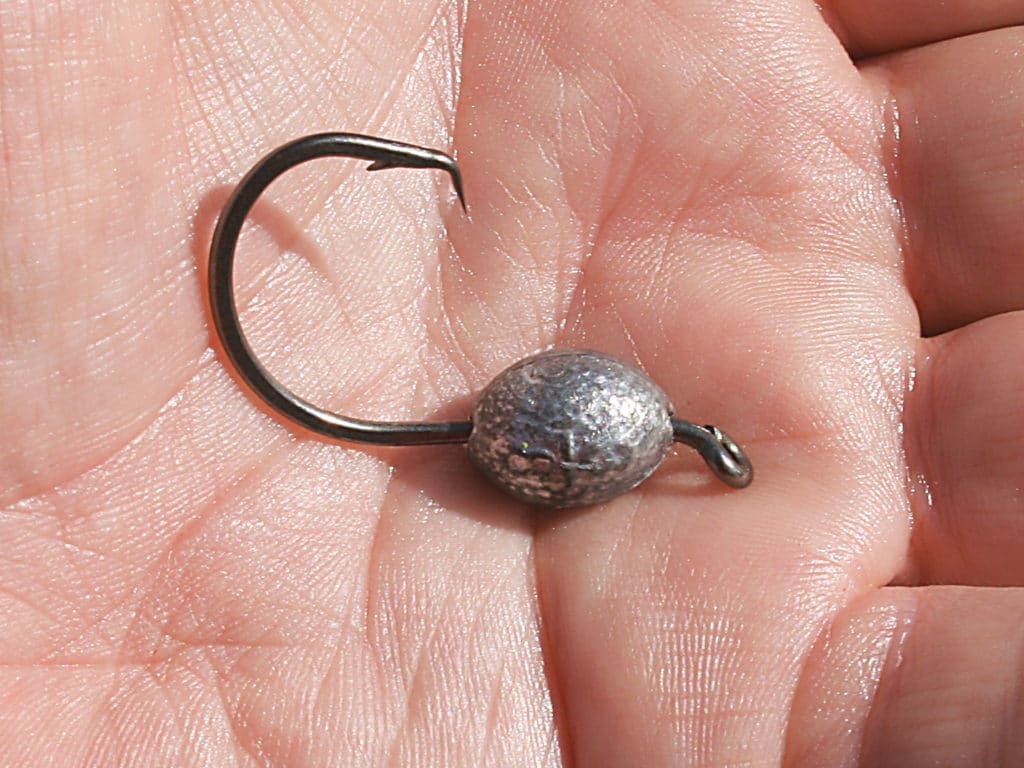
“I use it when I target redfish with clients, baiting with a chunk of blue crab. It’s about the surest bet for catching fish I know,” Eggers states. “I tell anglers to just put the rod in a holder and leave it alone until a fish takes the bait and the rod bows. The circle hook sets automatically in the corner of a fish’s mouth 90 percent of the time, so the rig is great for catch-and-release.”
Redfish Fishing in Spartina Grass
Eggers also likes pitching weedless-rigged soft-plastic lures to redfish amid spartina grass in coastal areas. He catches some of the heaviest ones by poling his skiff through the grass, looking for fish. “I look for open areas combined with submerged grass in water 2 to 3 feet deep. That’s where reds hold to ambush mullet and other bait,” Eggers explains.
He adds that the key is to find such areas inside creeks and over mud flats during high tides; that’s when the fish cruise through the grass and are usually aggressive. A paddle tail lure resembling a finger mullet, rigged weedless on a 1⁄16- to 1⁄8-ounce weighted hook, is his weapon of choice. He simply allows it to fall slowly into the grass holes.
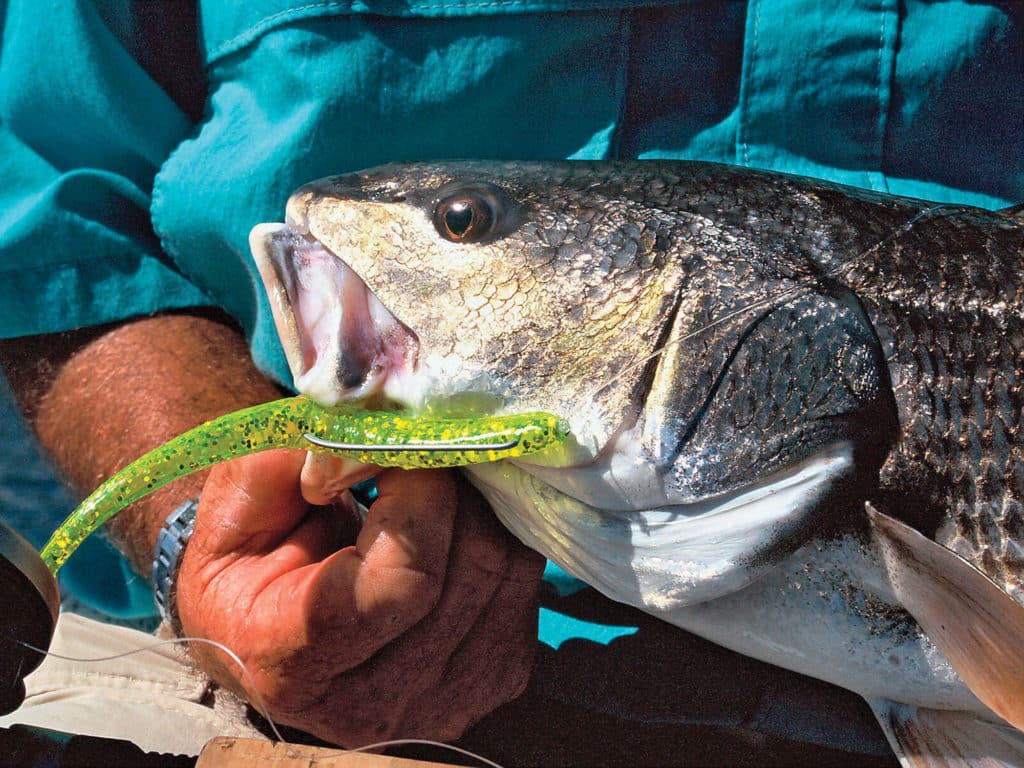
When Redfish Are Hard to Find
When redfish seem to vanish overnight, Eggers looks for transition areas: places where reds stage when forced off the shallows by sudden changes in water clarity, temperature, forage availability or angling pressure. “When reds transition, it’s usually to a deeper area pretty close to where they were last seen. If the reds had been on a mud flat, I look for a nearby channel or drop-off, which can be as much as 20 feet deep. If I found them up a creek most recently, I’d check the deeper creek bends or the creek mouth.”
Redfish stage in those deeper areas in packs or schools. Competition among tightly packed fish is often fierce and the strikes can be aggressive, so the best way to target them is vertical jigging with soft-plastic lures, heavy spoons or live bait. “Boat position is key to catching fish when vertical jigging,” Eggers points out. “Use the trolling motor to keep artificial or natural baits vertical as you pass over the fish’s hangout and watch the line as your lure or bait falls.”
If you don’t get a taker by the time it hits bottom, free-spool or open the bail to keep the lure or bait in the zone longer as the boat drifts away. Eggers says you should mark the location with a float or a waypoint on your chart plotter when you catch a red or two from a spot because more fish are probably holding in that precise location.
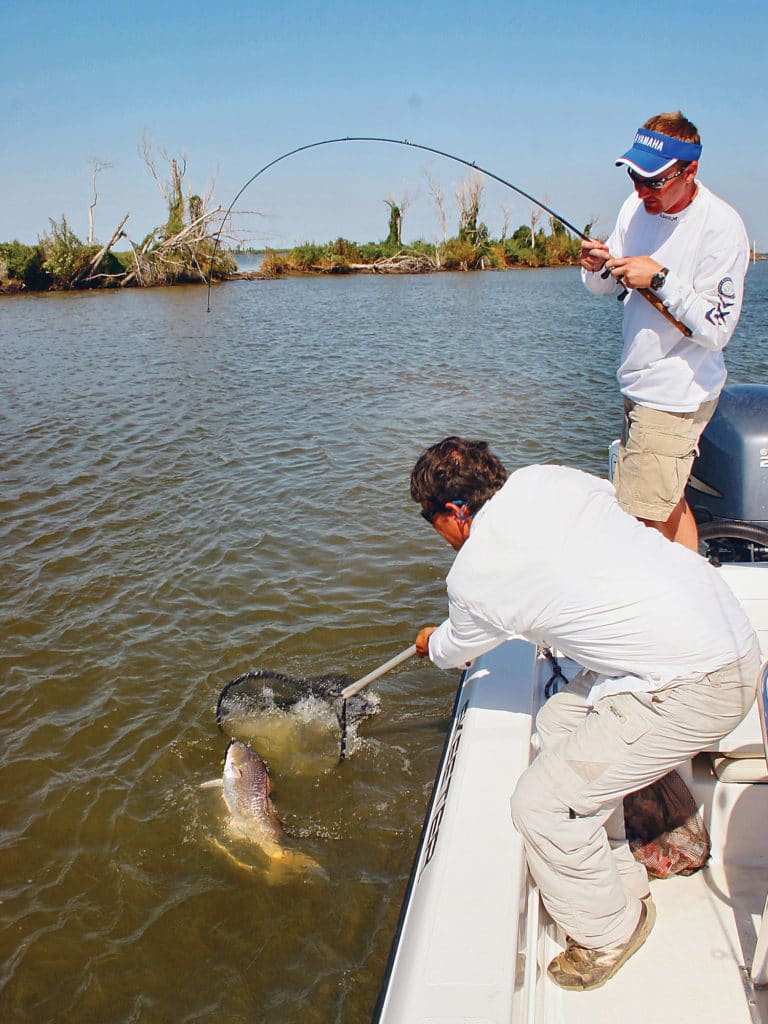
Fishing Lures for Redfish
Capt. Tim Cutting, of St. Simons Island, Georgia, says soft-plastic jerkbaits are his favorite redfish lures. “I love using the 5-inch Zoom Salty Super Fluke. It’s easy to rig with a weedless Gamakatsu EWG (-Extra Wide Gap) worm hook, and it’s deadly around grass edges, docks, oysters and snags where other lures tend to foul.” In shallow water, Cutting rigs the fluke weightless. In deeper water, he uses a weighted worm-style hook, or inserts a small nail or glass rattle into the soft-plastic body to make it fall to the bottom where redfish usually prowl.
When fishing the flats on windy days, Cutting rigs the fluke with a circle hook through the lure’s nose and works it with a walk-the-dog action. “Many times, reds hit the lure following a pause,” he explains. “With a circle hook, just keep reeling to get the line tight. Never snatch the rod back like on a normal hook-set.”
There’s a new breed of soft plastic that hit the market this year. They have a similar profile and action to the fluke, but they are a little different for when you need to show fish something they haven’t seen. The Z-Man Big BallerZ has a ball at the end of its tail, making it somewhat of a hybrid between a fluke-style lure and a paddle tail. It’s already proving to be a redfish slayer.
Another new lure that’s catching redfish already is the Berkley Gulp! Saltwater Dragon Tail. This one has a slimmer profile with a darting action, along with that proven Gulp! stink that draws strikes from many inshore species.
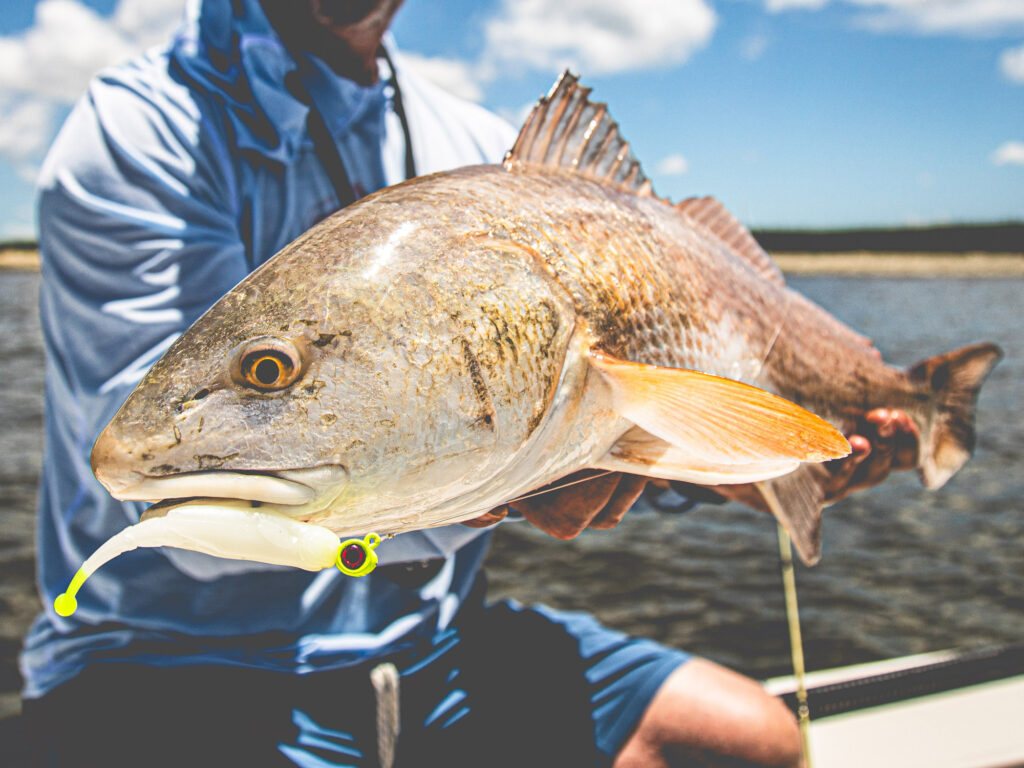
Redfish rely heavily on their sense of smell as opposed to their eyesight, so scented lures are often the ticket to success. Cutting is partial to liberal use of liquid fish attractants such as those from Bang, Gulp! and Pro-Cure.
Bang Saltwater Formula is a spray-on formula that uses shrimp oils. Berkley Gulp! Alive doubles as a stand-alone attractant for any lure, and it also serves to “recharge” Gulp! baits that have been in the water a while and lost some of their magic. Pro Cure Inshore Saltwater Super Gel is super sticky, so it adheres to your lures for a long-lasting scent trail.
“You can soak any soft plastics, plugs, bucktail jigs and other artificials in them. But all these liquid scents come in a bunch of colors, flavors and consistencies, and you’ve got to try different brands with different lures until you find the right combination for the conditions at hand,” he says.
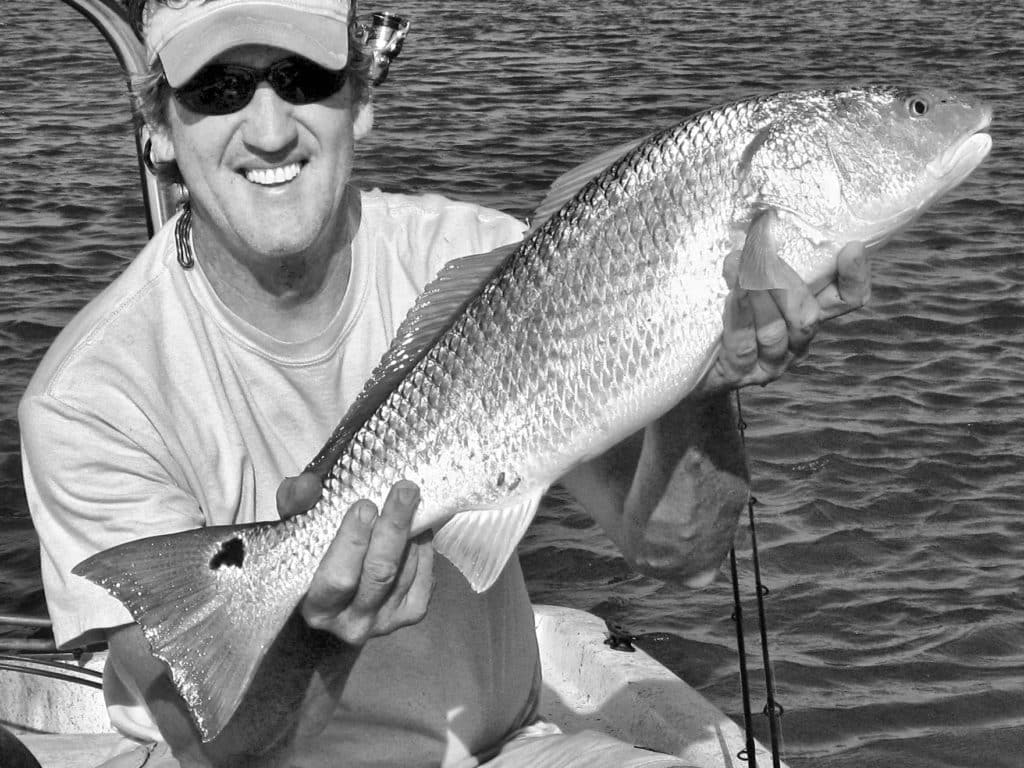
Crankbaits for Redfish
The Georgia pro is also a fan of crankbaits. He says redfish, much like freshwater bass, hit them readily, and he chooses different sizes and designs to run at various depths. “Most of the time, I use the Mann’s Baby 1-Minus in 1 or 2 feet of water. It has great action and casts a country mile, perfect for working long shell bars or rock jetties. But I’ve also caught many reds working 4- to 6-foot diving crankbaits over shell bars and have -absolutely crushed them with Norman deep-diving crankbaits in water as deep as 20 feet,” he says.
The Norman Deep Little N and Norman Professional Edge DD14 are two deep-divers that regularly produce redfish.
Cutting often uses crankbaits to quickly cover lots of water and locate scattered reds, but he warns, “good quality plugs with a sturdy lip are needed because they gotta bounce along — sometimes over oysters and rocks — without snagging.” To help matters, he often clips off the front-facing point on each treble. In shallow grassy areas, he replaces the trebles with single 1/0 Owner Mosquito hooks.
Lipless crankbaits are another great option for redfish. Their loud rattles draw attention from afar, and they can be tougher than standard crankbaits. Bang a lipless into jetty rocks, rip it through grass or grind it over oyster beds; you might lose some paint, but it’ll still catch redfish.
The venerable Rat-L-Trap was the beginning for this style of bait in freshwater, and the Bill Lewis Saltwater Rat-L-Trap is beefed-up with components to withstand the rigors of inshore fishing. The Bomber Saltwater Grade Super Pogy is another great lipless crank. Its rattles are tuned to a frequency that seems to drive redfish nuts.
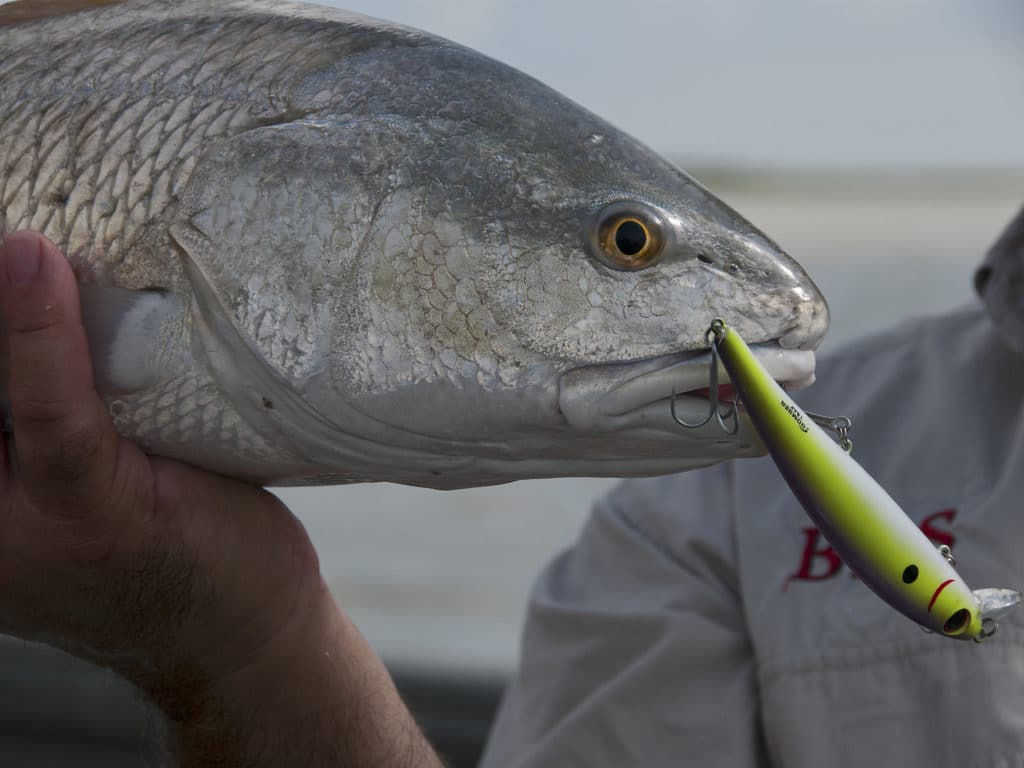
Fishing for Redfish with Crabs
Soaking crabs on the bottom around nearshore drop-offs (6 to 20 feet) off barrier islands, like Dauphin Island, in the open Gulf of Mexico, is deadly for bull redfish, says Capt. Charlie Gray, an Alabama charter captain and tournament angler. He’s picky about the size he uses for bait, so he catches his own. “I prefer small blue crabs 3 to 5 inches across the shell and rig them on 3/0 to 7/0 circle hooks with 3 to 4 feet of 30- to 40-pound fluorocarbon leader,” he explains. “And I add a 2- to 4-ounce egg sinker above the swivel connecting the leader to the main line of 30- to 50-pound braid.” Gray also crushes larger crabs to use for chum when setting up near drop-offs to draw reds onto shallow sandbars where he anchors and deploys baits. Live finger mullet, croakers and pinfish are also good baits, but he catches fewer sharks and jacks when using crabs.
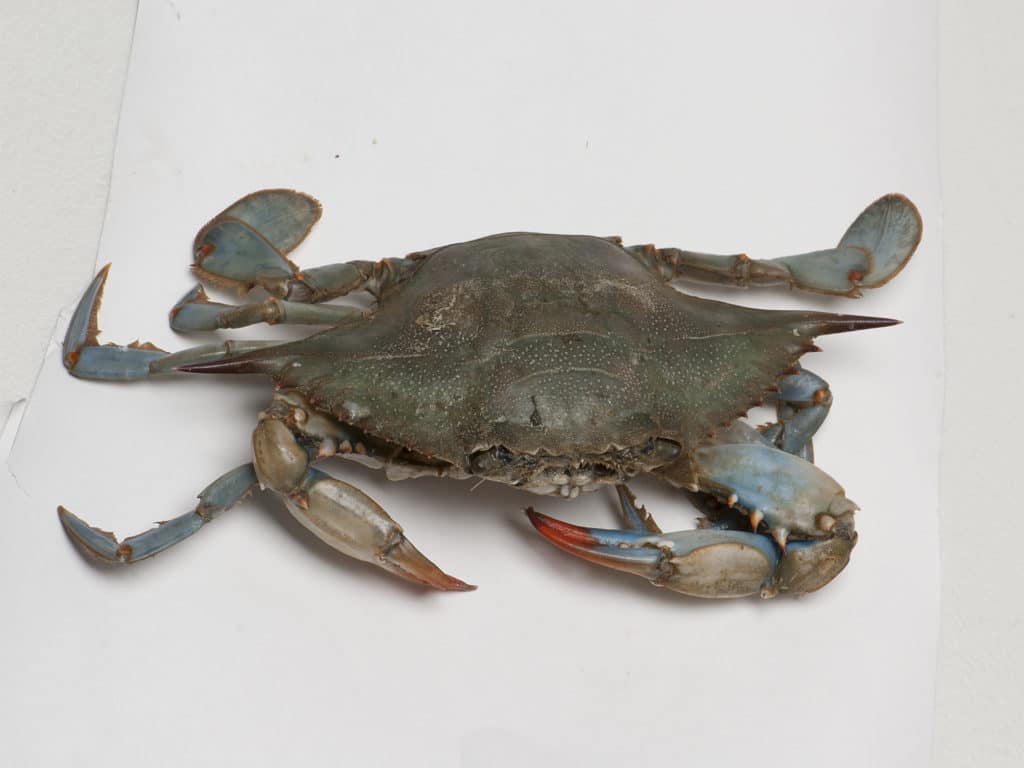
The Dauphin Island guide also likes shallower drop-offs where the depth drops from a couple of feet to 5 to 7 feet, but he prefers to wade because the slap of the water on the boat often spooks fish. “It’s best to wade waist-deep and cast out to the deeper water off the edge,” he explains. “If several anglers are wade-fishing the same drop-off, everyone should use a different bait or lure until one starts catching fish.” According to Gray, a live shrimp fished under a popping cork with a 2- to 3-foot leader of 15-pound fluorocarbon is an excellent choice when wade-fishing those edges, and topwaters like Yo-Zuri’s 3DB Pencil, lipped plugs like Egret Baits’ Zombie RIP Stik, and soft-plastic lures like those by Matrix Shad are all good choices too.
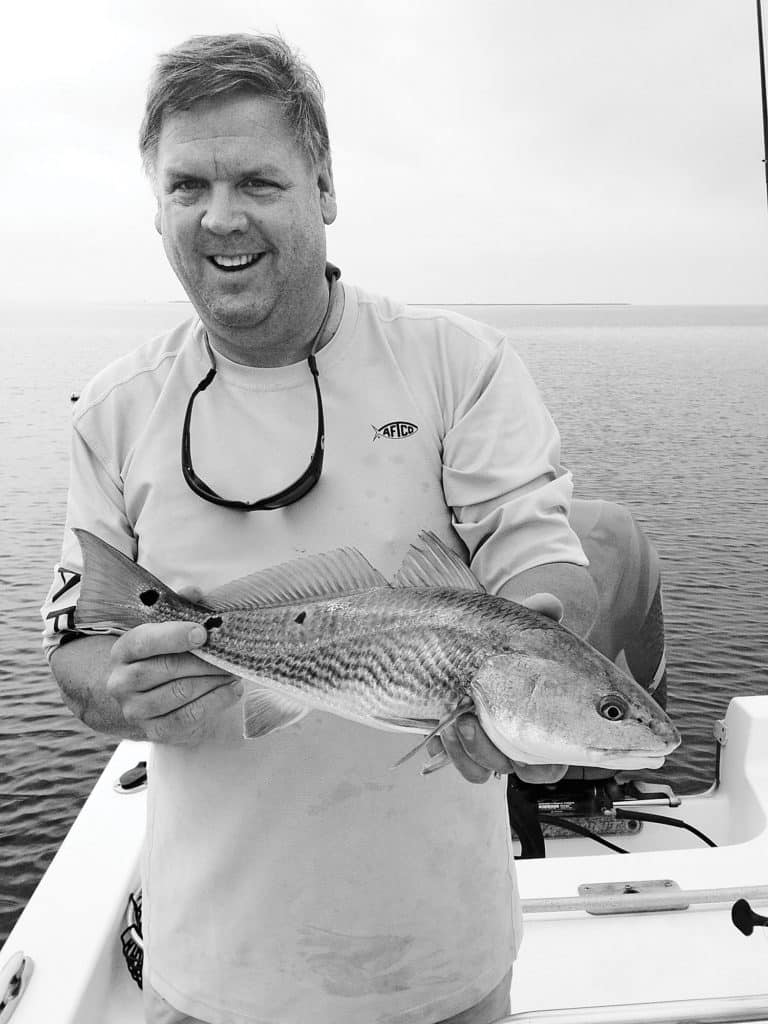
Don’t Spook Redfish Schools
Capt. Tony Bozzella, charter captain and tournament pro from Macclenny, Florida, poles or uses his electric motor to search quietly for redfish on the shallows. “I keep the sun at my back when poling flats to sight-fish reds. It’s easier to spot them and harder for them to see my boat,” he says. When using his trolling motor, Bozzella believes it’s essential to leave it on a constant speed. He says varying speeds or, worse, turning the motor on and off spooks skinny-water reds.
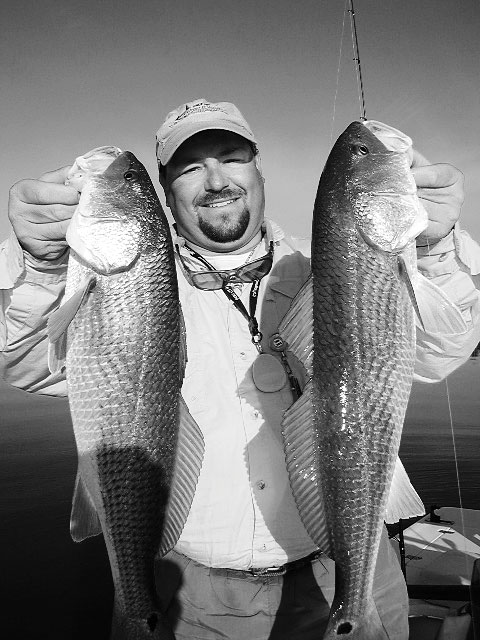
When he locates a school, Bozzella creeps quietly around it, making long casts downwind to the outskirts of a school to let the fish find the bait on their own. “You catch more reds from a school this way, rather than casting into the school, which rarely produces more than a fish or two,” he claims.
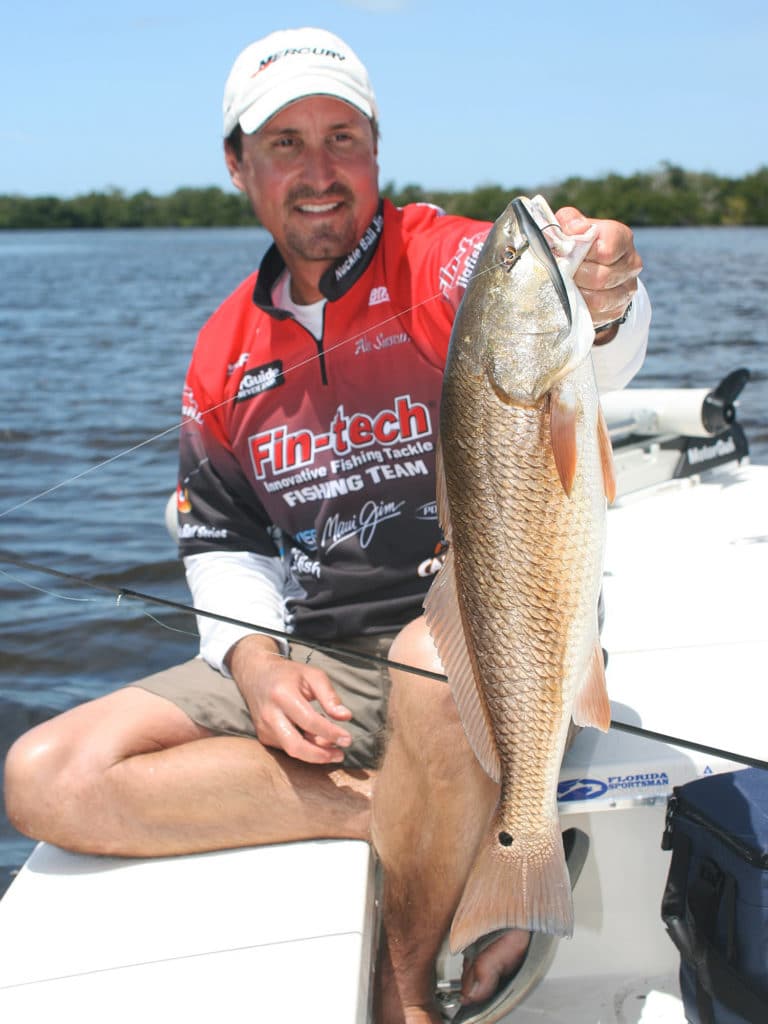
Cast Fishing Lures Upcurrent
For more natural redfish rigs and presentations, the Northeast Florida guide tries to present lures to redfish with the current flow. He casts up-current and lets the tide sweep the artificial toward the fish as he retrieves it. Bozzella also insists that, instead of casting lures toward a structure at a 90-degree angle, it’s better to work the lure along the contours, so he casts parallel and up-current along grass edges, sand and oyster bars, ledges and docks, extending the time his lure spends where the fish are most likely to be holding.
Redfish Fishing Captains
The pursuit of redfish is DIY-friendly and doesn’t require large or specialized boats. The following guides excel at the game in their respective regions:
- Jacksonville Beach, Florida Capt. John Eggers 904-591-1611
- St. Simons Island, Georgia Capt. Tim Cutting 912-230-1814
- Dauphin Island, Alabama Capt. Charlie Gray 251-379-5067
- Macclenny, Florida Capt. Tony Bozzella 904-651-0182
Redfish Fishing Tackle
- Rods: Medium-action spinning or baitcasting, rated for 10- to 50-pound line
- Reels: Matched to rod
- Line: 10- to 50-pound braid, depending on the situation and the size of the redfish targeted
- Leaders: 15- to 40-pound fluorocarbon
- Lures: Zoom Salty Super Fluke, Z-Man Big BallerZ, Berkley Gulp! Dragon Tail, Matrix Shad paddle, Yo-Zuri 3DB Pencil, Mann’s Baby Minus-1, Norman Deep Little N, Norman Professional Edge DD14, Bill Lewis Saltwater Rat-L-Trap, Bomber Saltwater Grade Super Pogy
- Bait: Chunks of blue crab, live shrimp, finger mullet, croakers and pinfish
- Lure Scents: Berkley Gulp! Alive, Bang Saltwater Formula and Pro-Cure Inshore Saltwater Super Gel









